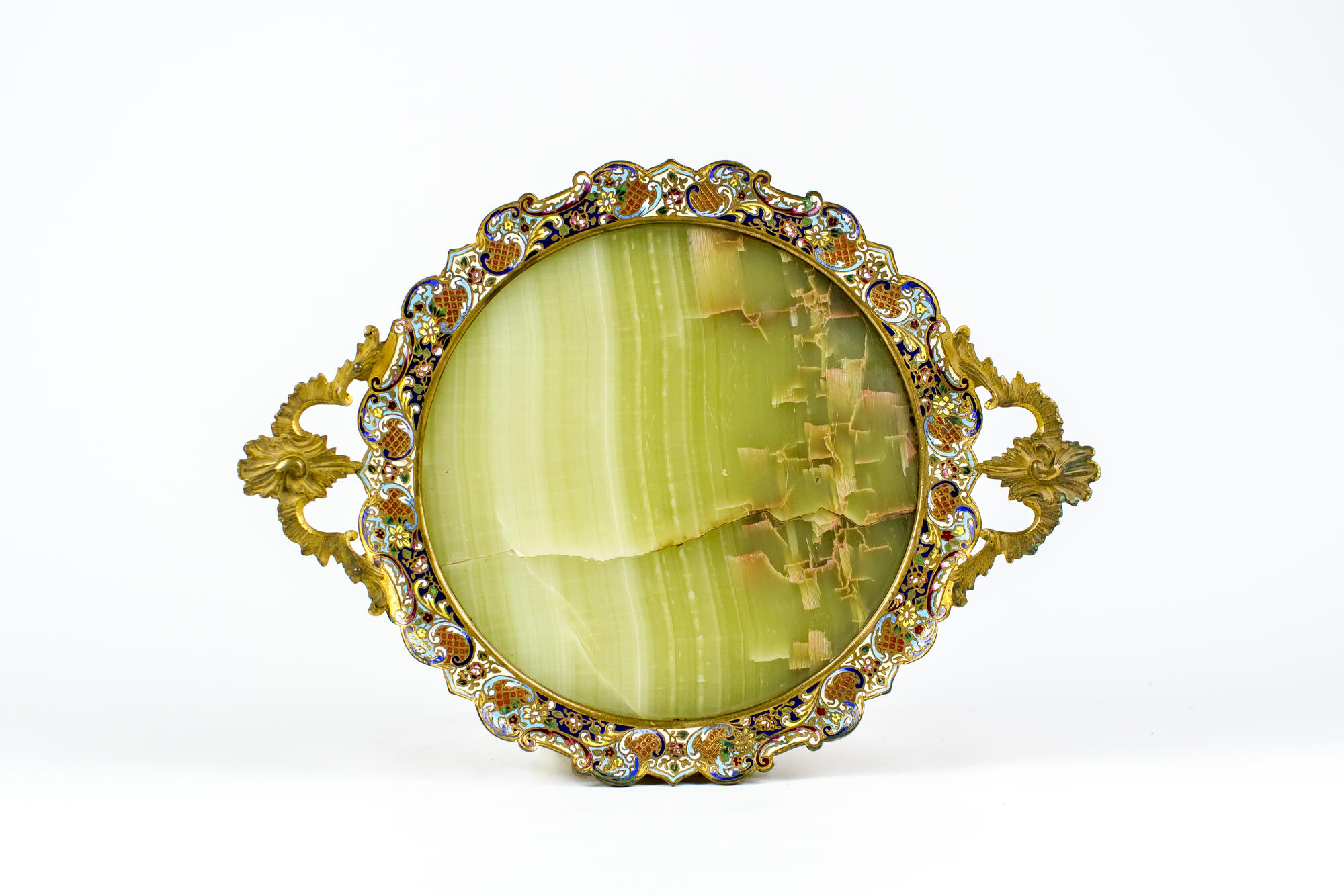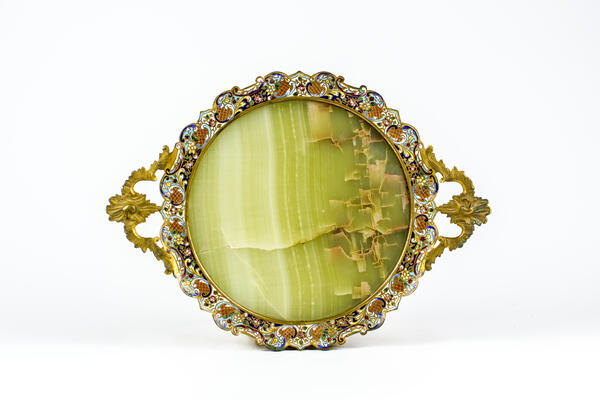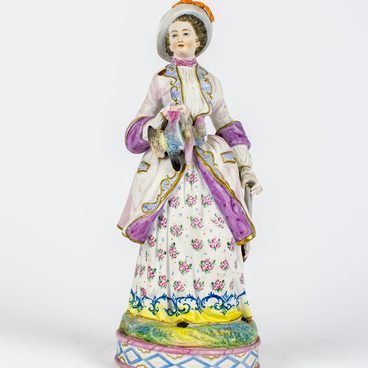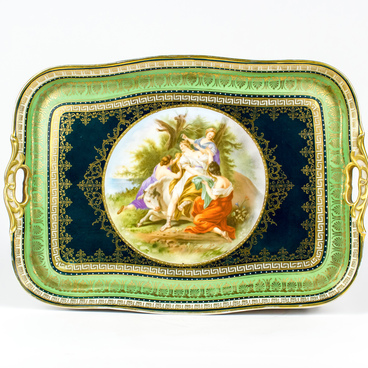The trivet for hot dishes presented in the exhibition was made in France in the 19th century.
This history of this item is connected with the culture of drinking. Germany is considered to be the birthplace of the very first mat for the bowl. In German, this accessory was called “birdekel”, which literally translates into Russian as “beer lid”. In the 19th century, it was customary in German pubs to cover the mugs with felt napkins to protect the drink from flies and other insects. Later the same napkins were put under the mugs so that they would not slide on the table. Birdekels in those days were reusable: after the feast they were washed, dried, and used again.
A few years later, coasters made of thick, moisture-absorbing cardboard were invented, but such an accessory had a very short service life. Therefore, over time, they began to be made of more durable materials that are resistant to moisture and high temperature. Later, they began to be made not only for mugs, but also for dishes.
The base of this trivet is made of onyx. In ancient times, this stone was used to make seals, cups, caskets and other things. Moreover, onyx was used in the decoration of temples and cathedrals. For example, in the Middle Ages, the thinnest plates of this mineral replaced the glass in the stained-glass windows of cathedrals. Only rich families could afford onyx products.
Onyx is a chalcedony variety of quartz. The color of the mineral can be brown, greenish-brown, honey, white, yellowish-brown. Onyx is opaque by its nature.
The frame of the trivet is made of bronze in the technique of cloisonne enamel. To create objects using this technique, the outline of a future image is scratched, engraved or cut through on a thin metal plate made of copper, gold, more rarely silver, melchior or stainless steel. The thickness of the strips depends on the author’s idea, but rarely exceeds 1 millimeter. The strips create both closed and open cells of various shapes and sizes. Each cell is filled with enamel and then fired. After that, the enamel is sanded and finally polished in such a way that the enamel and the top of the partitions are in the same plane. The resulting multi-colored enamel image resembles an inlay with precious stones.
This history of this item is connected with the culture of drinking. Germany is considered to be the birthplace of the very first mat for the bowl. In German, this accessory was called “birdekel”, which literally translates into Russian as “beer lid”. In the 19th century, it was customary in German pubs to cover the mugs with felt napkins to protect the drink from flies and other insects. Later the same napkins were put under the mugs so that they would not slide on the table. Birdekels in those days were reusable: after the feast they were washed, dried, and used again.
A few years later, coasters made of thick, moisture-absorbing cardboard were invented, but such an accessory had a very short service life. Therefore, over time, they began to be made of more durable materials that are resistant to moisture and high temperature. Later, they began to be made not only for mugs, but also for dishes.
The base of this trivet is made of onyx. In ancient times, this stone was used to make seals, cups, caskets and other things. Moreover, onyx was used in the decoration of temples and cathedrals. For example, in the Middle Ages, the thinnest plates of this mineral replaced the glass in the stained-glass windows of cathedrals. Only rich families could afford onyx products.
Onyx is a chalcedony variety of quartz. The color of the mineral can be brown, greenish-brown, honey, white, yellowish-brown. Onyx is opaque by its nature.
The frame of the trivet is made of bronze in the technique of cloisonne enamel. To create objects using this technique, the outline of a future image is scratched, engraved or cut through on a thin metal plate made of copper, gold, more rarely silver, melchior or stainless steel. The thickness of the strips depends on the author’s idea, but rarely exceeds 1 millimeter. The strips create both closed and open cells of various shapes and sizes. Each cell is filled with enamel and then fired. After that, the enamel is sanded and finally polished in such a way that the enamel and the top of the partitions are in the same plane. The resulting multi-colored enamel image resembles an inlay with precious stones.



